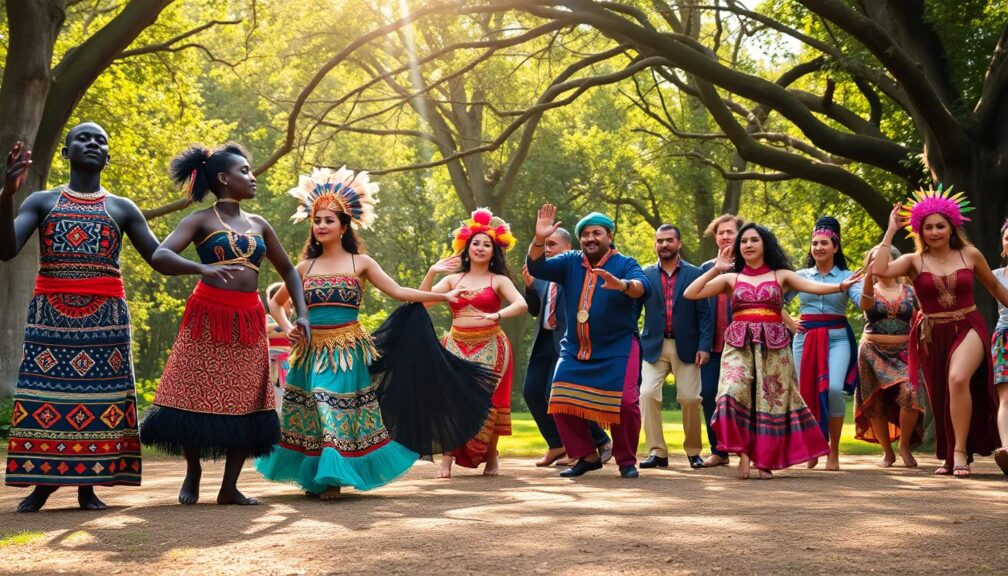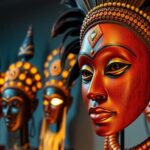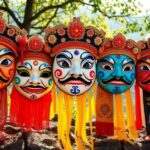The Cultural History and Evolution of Dance Masks

Did you know that some of the oldest known artifacts in human history are masks? Dating back to the Paleolithic era, these fascinating objects serve not only as protection but also as a means of expression, communication, and transformation. Across cultures and centuries, masks have played a pivotal role in rituals, celebrations, and performances, often imbued with profound meaning and symbolism. From the striking Balinese topeng to the intricate designs of masks for dancers, the world of masks is rich with stories waiting to be uncovered.
This article delves into the history, significance, and various forms of masks around the globe, particularly focusing on dance masks and their essential role in cultural expressions. We will explore the historical context of masks, their symbolism in different cultures, particularly the topeng dance in Indonesia, and the evolution of masks through the ages. By the end, you will have a comprehensive understanding of the multifaceted world of masks and their importance in human culture.
The Origins and Historical Evolution of Dance Masks
Masks have been a part of human history for tens of thousands of years, with the oldest masks discovered in the Middle East, specifically in what is now Israel, dating back to around 7000 BC. These early masks were often made from materials like animal hides, stone, and wood, and were primarily used in rituals and ceremonies. The function of these early masks was twofold: to serve as a disguise or representation of a spirit and to provide a form of protection during various rites.
As civilizations advanced, so did the complexity and craftsmanship of masks. In ancient Egypt, masks were intricately designed and used in burial practices to protect the deceased in the afterlife. The famous funerary mask of Tutankhamun, made of gold and adorned with semi-precious stones, is a prime example of how masks evolved into symbols of status and divinity. The ancient Greeks also utilized masks in their theatrical performances, where actors wore exaggerated facial features to portray different characters, allowing the audience to easily identify emotions and roles.
In Africa, masks hold a deep and varied significance depending on the region and the tribe. Among the Yoruba people of Nigeria, for example, masks are integral to community gatherings and rituals, often symbolizing ancestral spirits or nature deities. The craftsmanship of African masks is renowned for its intricate designs and vibrant colors, showcasing the artistic talents and spiritual beliefs of the community. This historical journey illustrates that masks are not merely objects; they are bridges to the past, connecting us to rituals, beliefs, and identities that have shaped humanity.
Cultural and Ritual Significance of Dance Masks
The cultural significance of masks extends far beyond their aesthetic appeal. They serve as powerful symbols in various traditions and can often embody complex meanings. In many cultures, masks for dance are not just decorative items; they are considered vessels for spirits, allowing the wearer to channel divine energy or ancestral presence during performances.
For instance, in many Indigenous cultures, masks are used in ceremonies to invoke spirits and encourage healing, protection, and guidance. The topeng masks of Indonesia, used in traditional topeng dance, are a perfect example of this. In Balinese culture, the topeng dance showcases the rich tapestry of Indonesian mythology and storytelling, where each mask represents a distinct character with specific traits and narratives. The masks are crafted with meticulous care, often adorned with intricate designs that reflect the character's personality and role in the story being told.
Furthermore, masks play a significant role in the rites of passage across different cultures. In many African societies, for example, masks are used during initiation ceremonies to signify the transition from childhood to adulthood. This transformative experience is often marked by the wearing of a dance mask, which symbolizes the individual's new status within the community. In this way, masks serve as cultural markers, delineating important life stages and connecting individuals to their heritage.
Masks in Performance and Dance
The world of performance and dance is perhaps where masks find their most dynamic expression. Dancing masks are integral to various artistic traditions, where they enhance storytelling, convey emotions, and engage audiences in a powerful way. In Bali, the bali mask dance is a vibrant celebration of culture, where performers don topeng masks to portray characters from local folklore and mythology.
The topeng dance often features a series of distinct characters, each represented by a different mask. These characters can range from noble kings to mischievous tricksters, each bringing a unique narrative to the performance. The use of masks allows dancers to transcend their individual identities, inviting the audience to immerse themselves in the story being told. The movements of the dancers, combined with the expressive features of the topeng masks, create a captivating spectacle that highlights the beauty and complexity of Balinese culture.
In addition to their role in traditional performances, masks have also found their place in contemporary art and theater. Many modern artists and performers experiment with masks to explore themes of identity, transformation, and the human experience. This evolution demonstrates that while the context and materials may change, the intrinsic power of masks to evoke emotion and convey meaning remains unchanged.
How Traditional Dance Masks Are Crafted and Symbolized
Creating a mask is an art form that requires skill, creativity, and a deep understanding of cultural symbolism. The process of crafting dance masks varies significantly across cultures, with each tradition employing unique techniques and materials. In Bali, for instance, artisans typically use wood, which is carefully carved and painted to create the distinctive features of topeng masks.
The craftsmanship involved in making a topeng mask is often passed down through generations, with artisans dedicating years to perfecting their skills. The choice of colors, patterns, and materials is deeply symbolic, reflecting the character and narrative associated with the mask. For example, bright colors may be used to signify joy and celebration, while darker hues might represent more somber themes.
In many cultures, the creation of masks is also imbued with spiritual significance. Artisans may engage in rituals or prayers while crafting a mask, believing that this imbues the object with spiritual power. This connection between the maker and the mask adds another layer of meaning, as the finished product is not merely a representation but a manifestation of the artisan's intentions and beliefs.
Contemporary Uses of Dance Masks in Modern Society
While masks have deep roots in history and tradition, their relevance continues in modern society. Today, masks are often used in various contexts, from theatrical performances to social movements. The resurgence of interest in traditional masks and their cultural significance has led to a renewed appreciation for indigenous art forms.
In recent years, the global pandemic has also brought masks into the forefront of public consciousness. While many people associate masks with health and safety, the symbolism of masks is deeply ingrained in the human experience. The act of wearing a mask for dance or performance takes on new meaning, as it highlights themes of identity, protection, and community.
Moreover, the use of masks in contemporary art and activism has become a powerful tool for expression. Artists use masks to comment on social issues, challenge norms, and provoke thought. This evolution of masks demonstrates their enduring relevance, as they continue to adapt and resonate with new generations.
The Future of Dance Masks in Global Cultural Expression
As we move forward, the future of masks appears to be intertwined with the ongoing exploration of identity, culture, and creativity. The revival of traditional practices, such as the topeng dance and other dances with masks, is a testament to the resilience of cultural heritage. These practices not only preserve history but also allow for innovation and reinterpretation in contemporary contexts.
The global exchange of ideas and artistic expressions has also led to the fusion of different mask traditions. Contemporary artists and performers are increasingly experimenting with masks in new ways, blending elements from various cultures to create unique and thought-provoking works. This cross-cultural collaboration enriches the conversation around masks, inviting diverse perspectives and interpretations.
In conclusion, masks remain a vital part of human culture, serving as symbols of transformation, communication, and connection. From the ancient rituals of our ancestors to the dynamic performances of today, masks continue to inspire, intrigue, and engage us in profound ways. As we embrace the future, the journey of masks will undoubtedly evolve, inviting us to explore new meanings and possibilities in this timeless art form.



